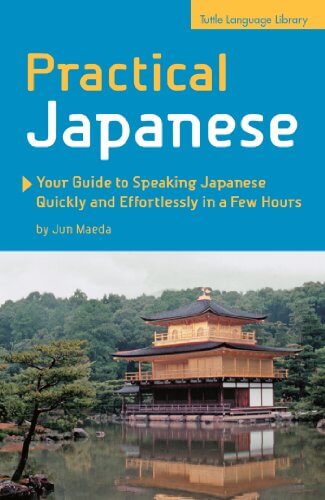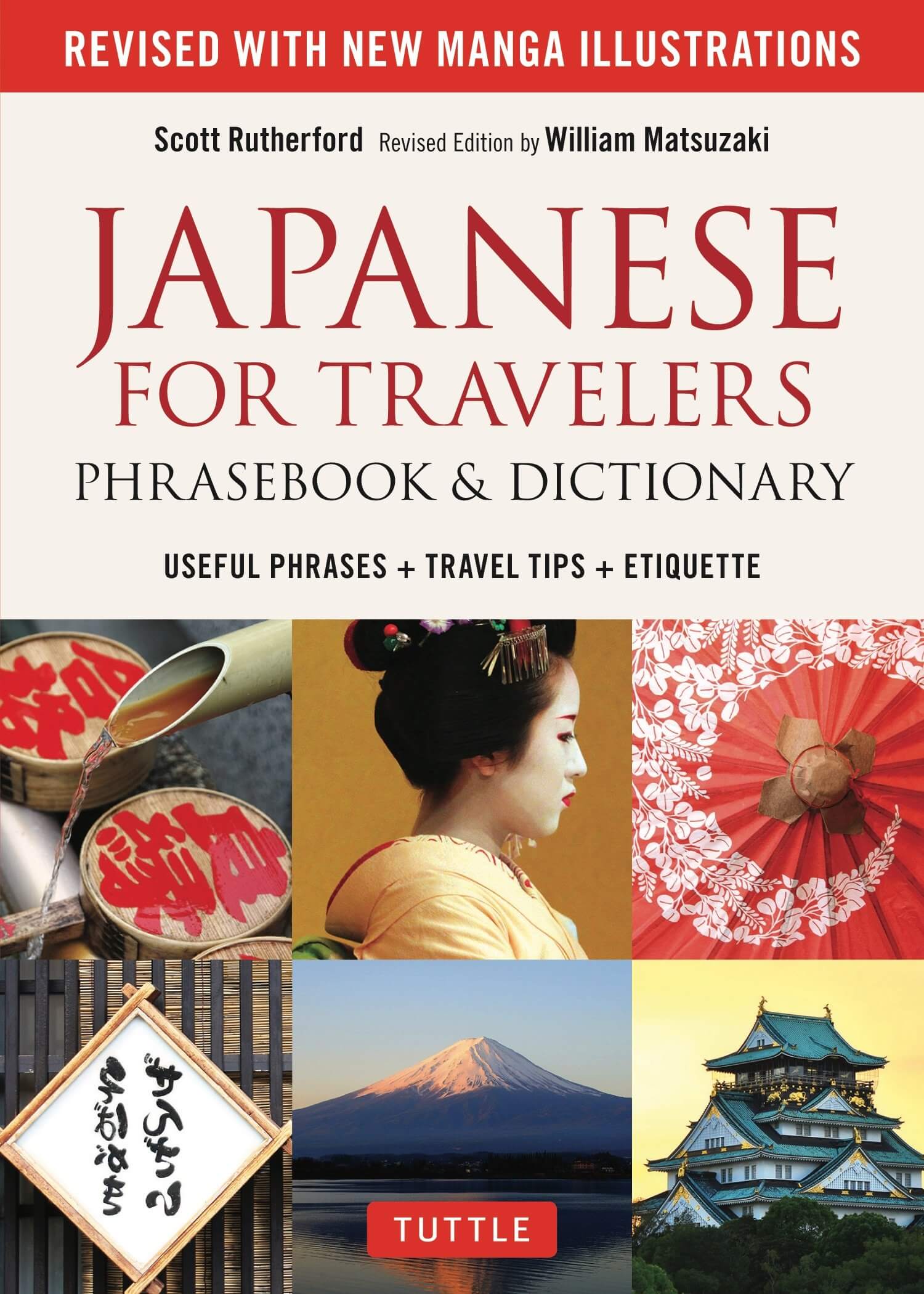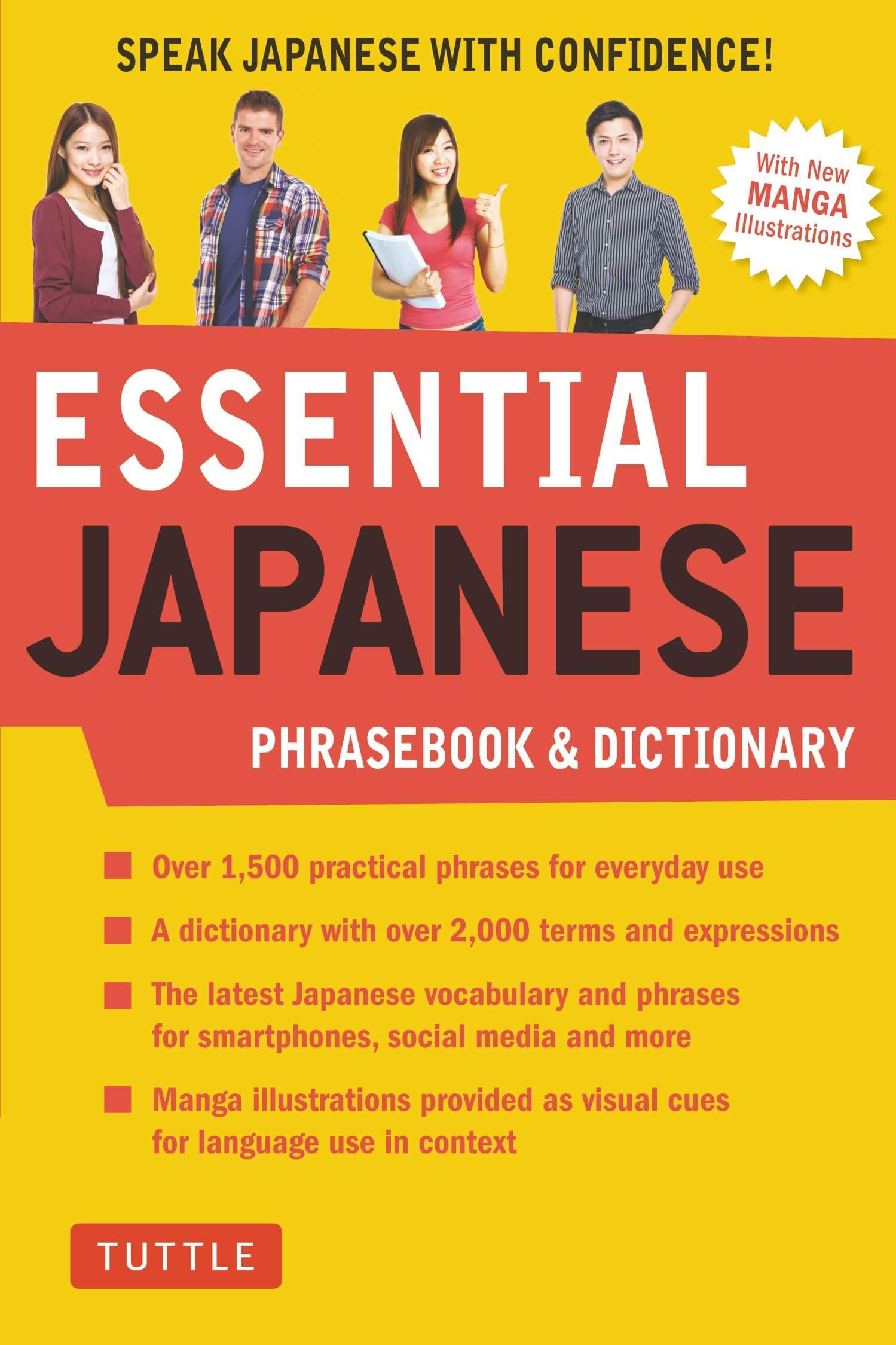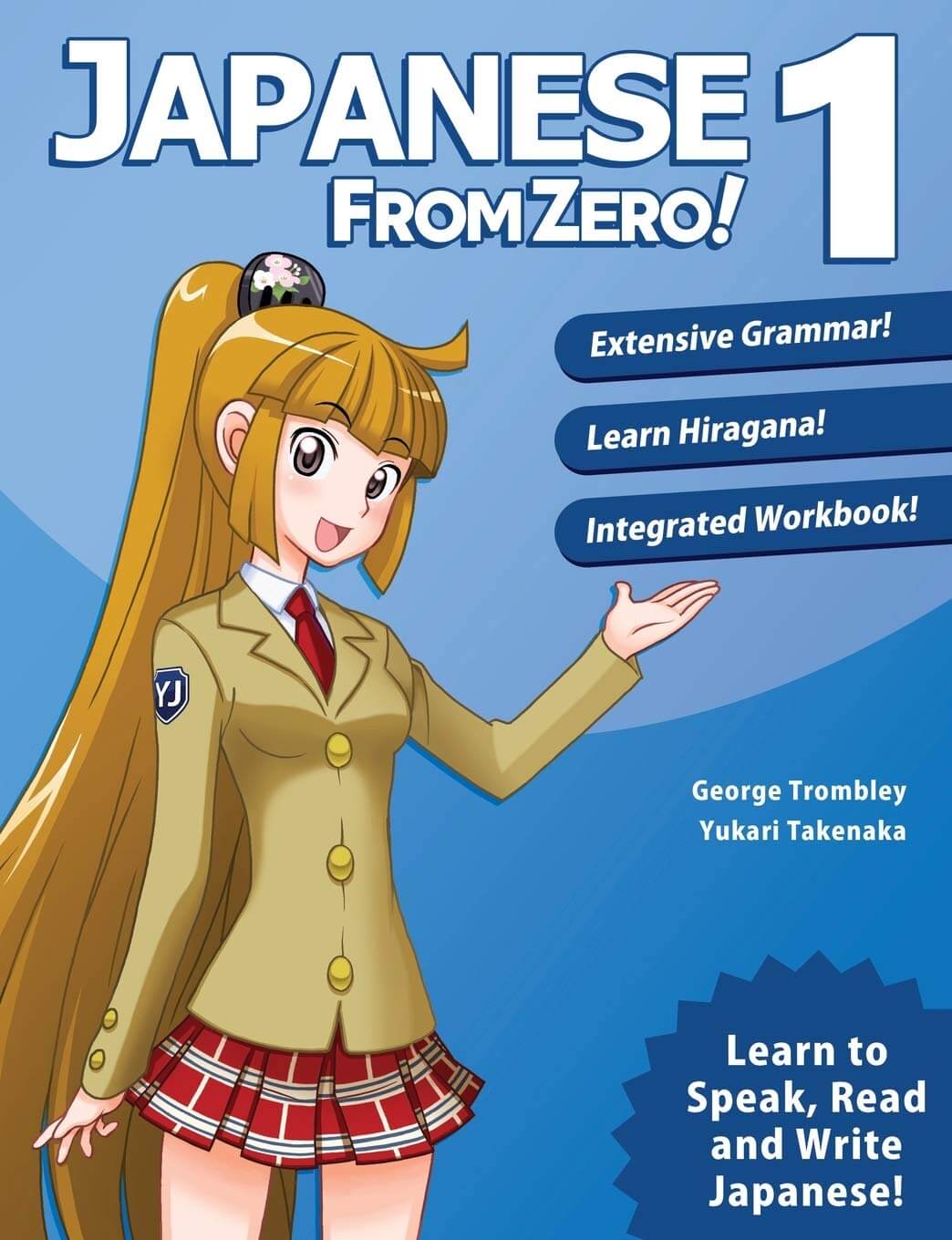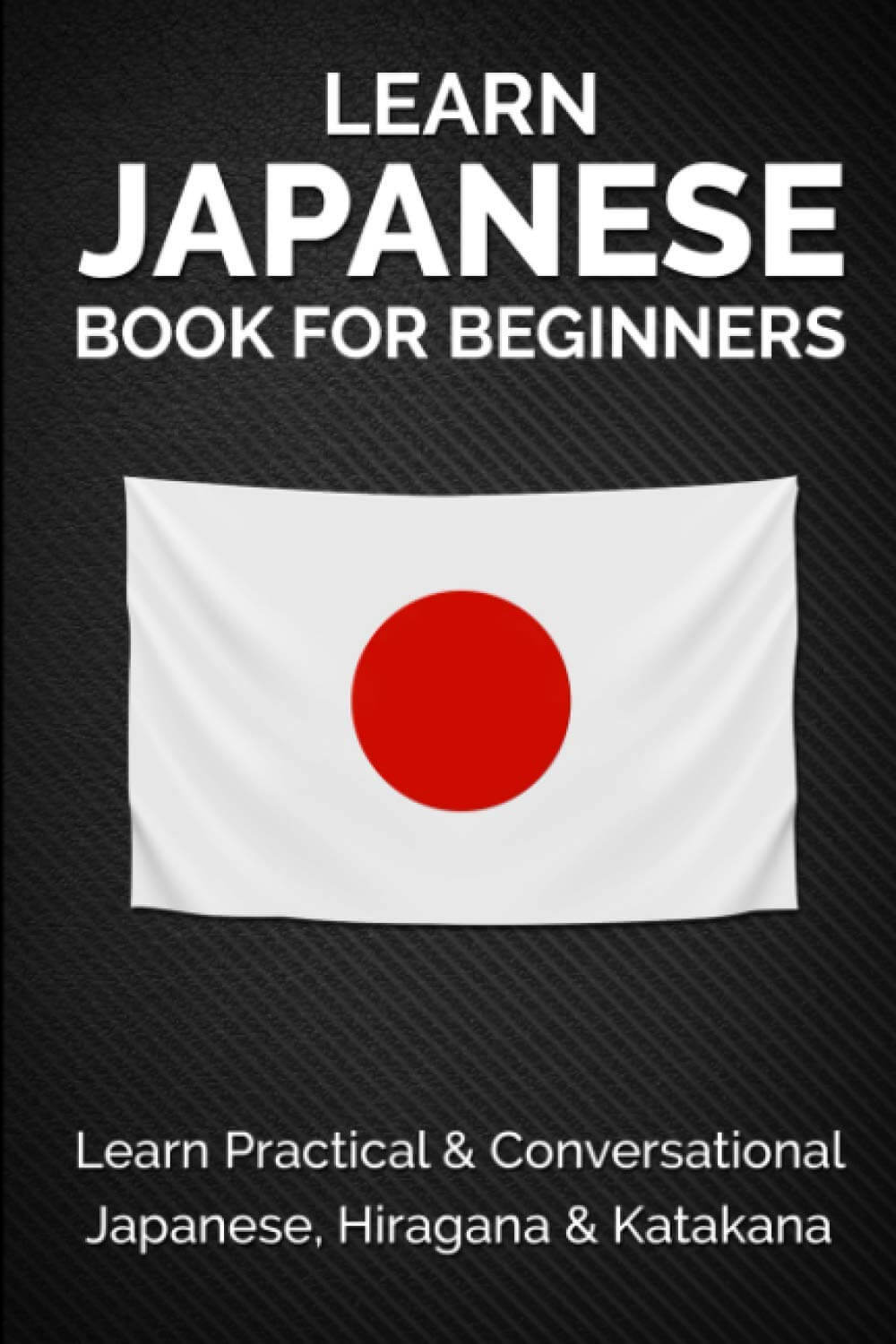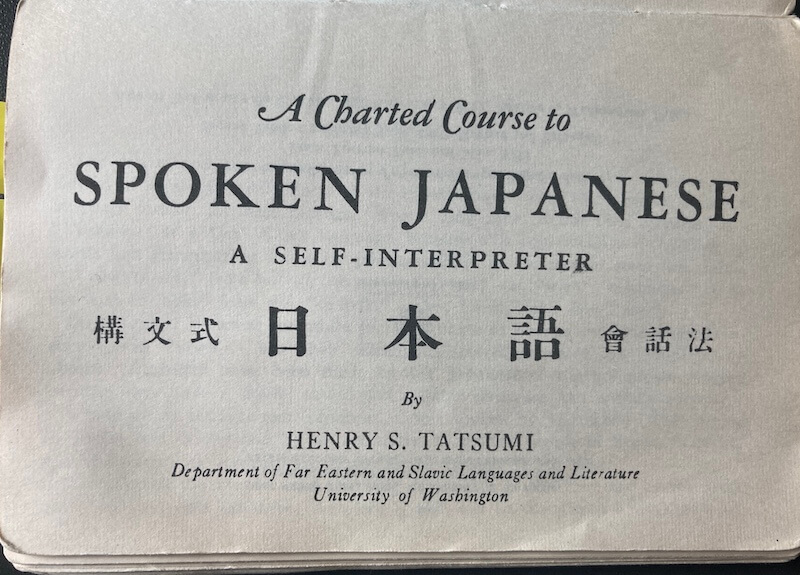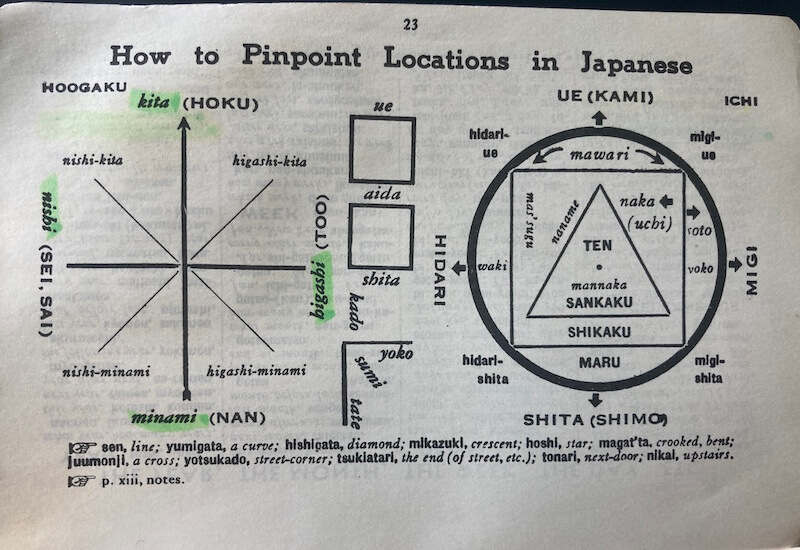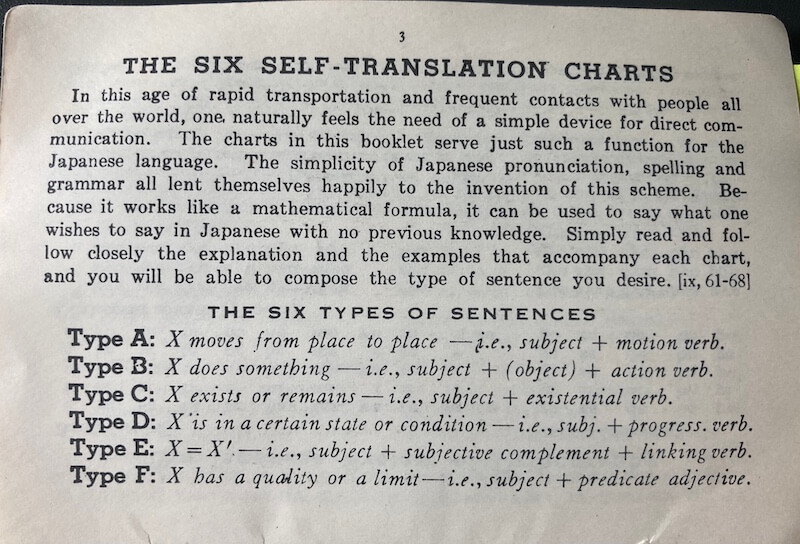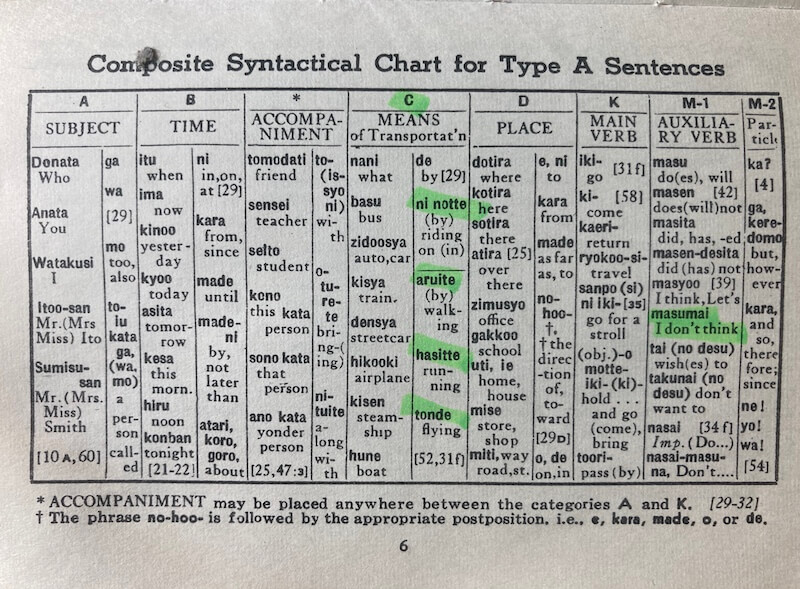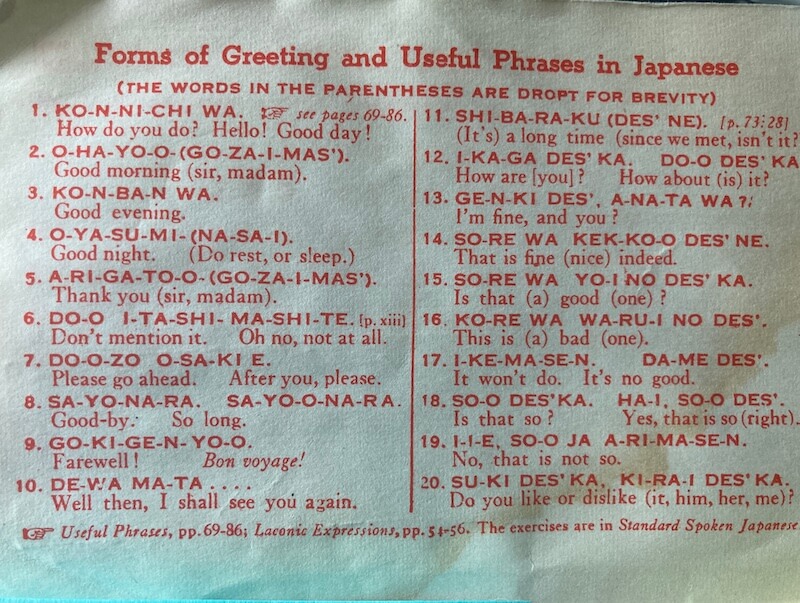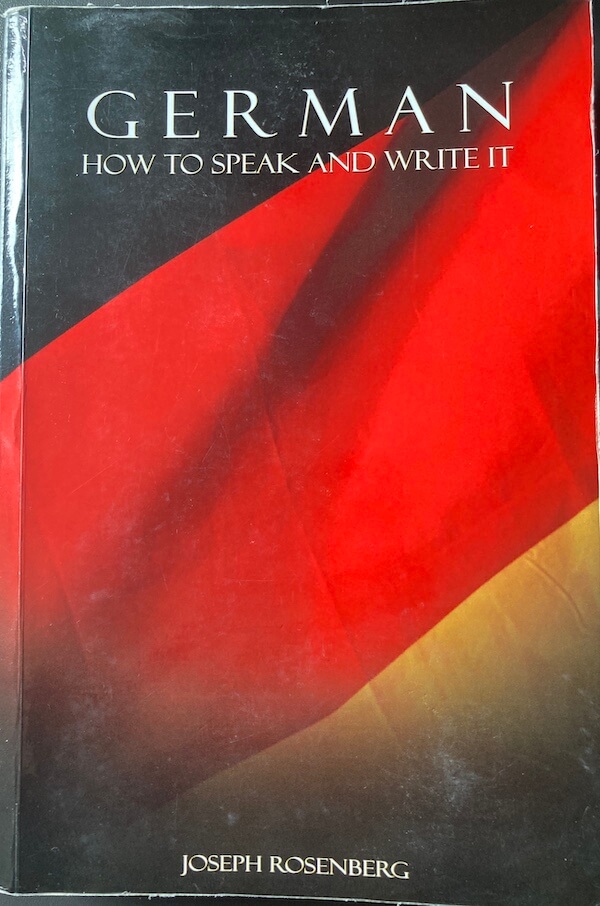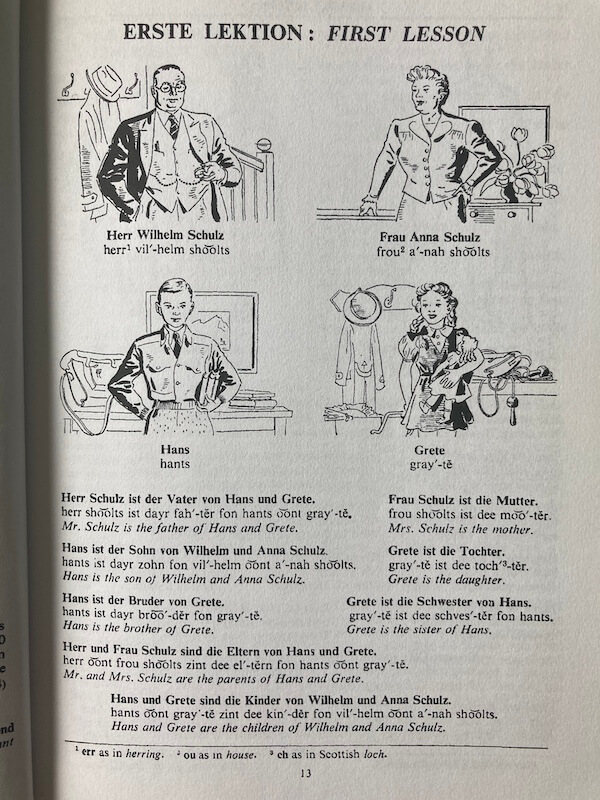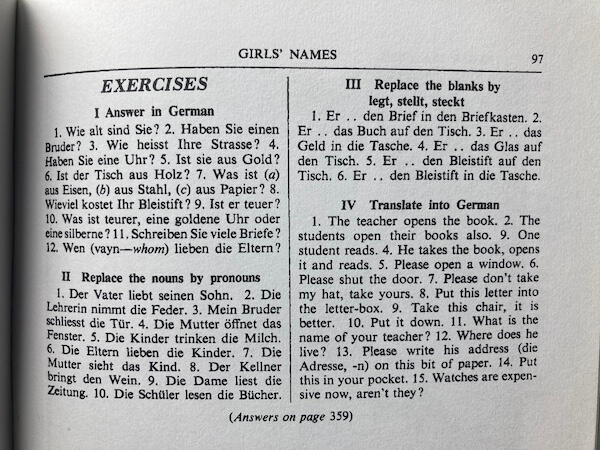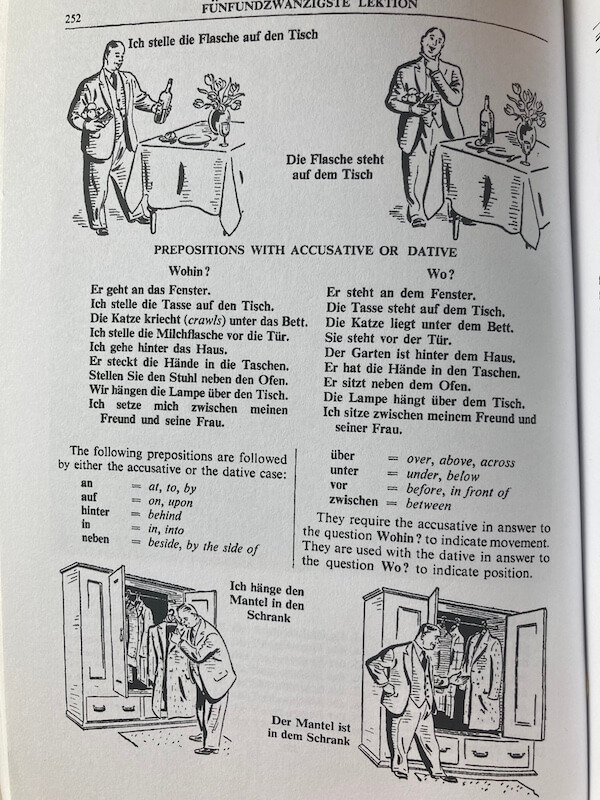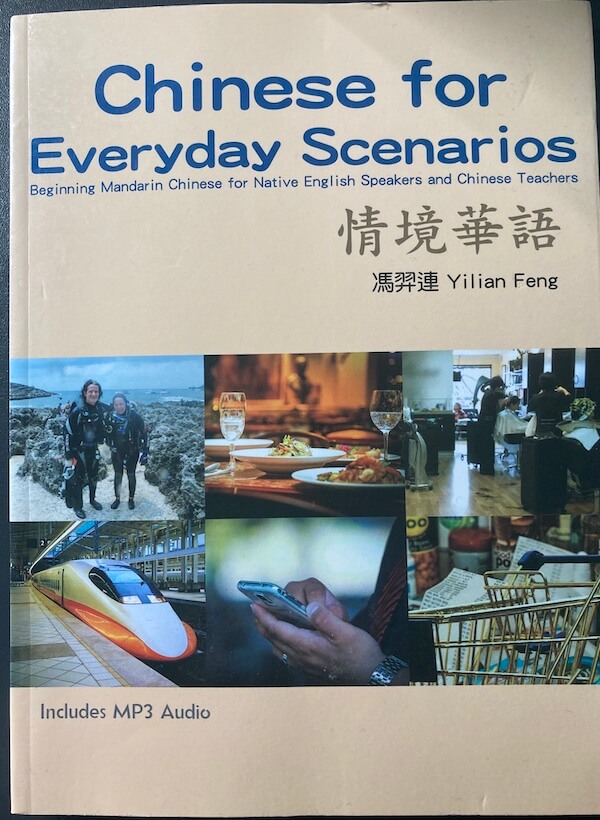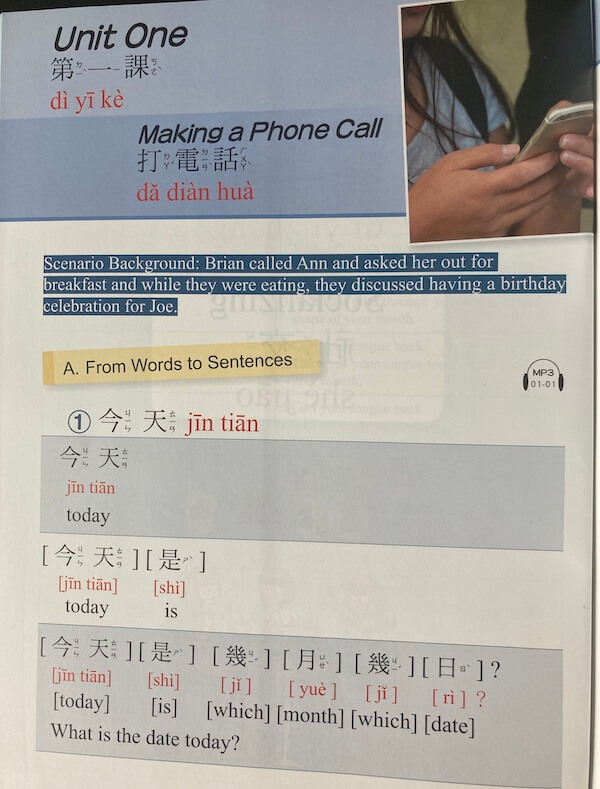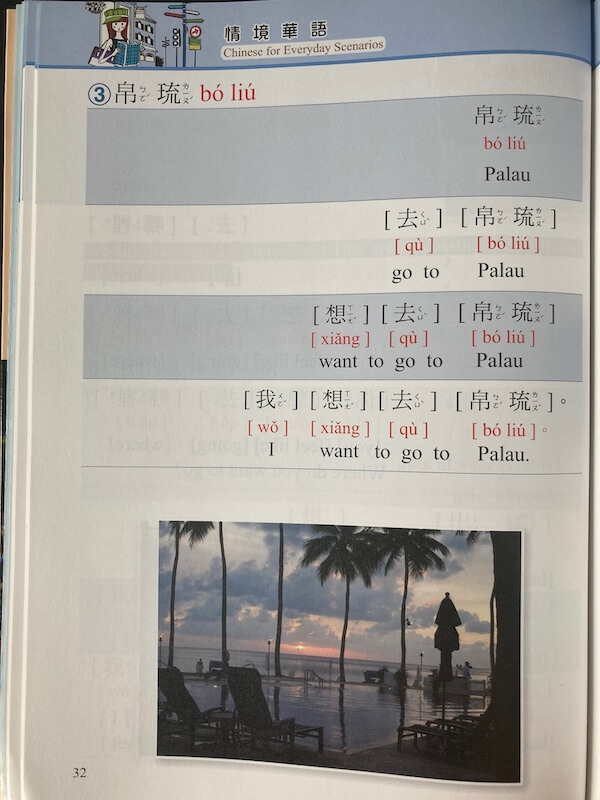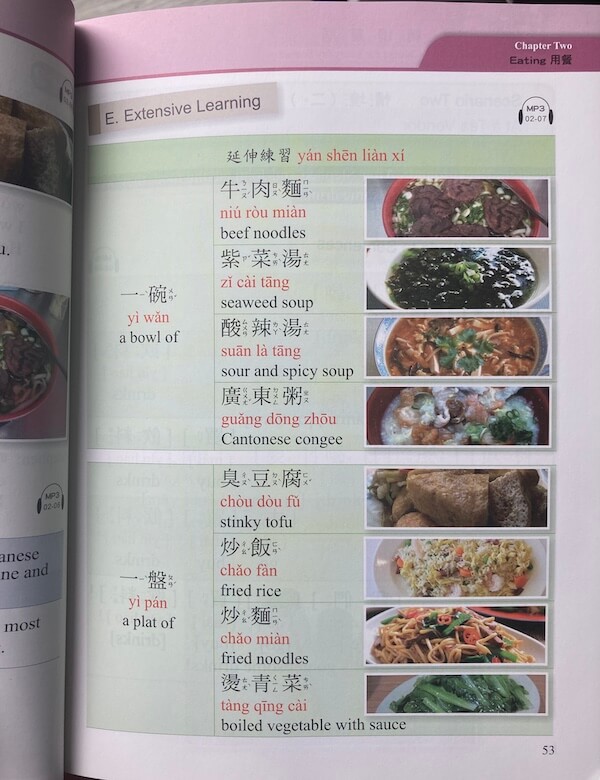What is Japanese for Anyone (Really!)?
Japanese for Anyone (Really!) is the product of many years of thought, research, and trial-and-error. It began when friends from abroad would come visit me when I was living in Osaka.
Though they had brought phrasebooks and apps to help them get around, even something as simple as asking where the restroom was was a difficult task. They would end up relying entirely on GoogleTranslate and even so not without experiencing a fair share of miscommunications and mispronunciations. The resources they had brought (like the phrasebooks and apps) seemed to be of no practical use, and so I started giving them short “lessons” on how to say the most recycled phrases, like how to order something or ask for the check, and how to pronounce them.
I soon became obsessively devoted to figuring out what best to teach, how to teach it, and in what order. I would seek out curious or flustered tourists and foreign residents as guinea pigs and through them I gradually refined the contents. Those I taught were consistently amazed at not only how easy it was to speak Japanese, but also how in only thirty minutes, they learned something that they could use every day in Japan and made them feel more familiar with the language they saw and heard all around them.
I affectionately call my book, the product of those many lessons and my personal experiences learning Japanese, a “frankenstein” – an unconventional yet thoroughly practical introduction to the language that is situated between a phrasebook and conventional textbook, as I found that the insufficient explanations in phrasebooks took away all the magic of Japanese, and that textbooks were too much of a commitment for the inquisitive traveler.
I wrote this book specifically to fill the gap between the two genres with the goal of teaching the tricky yet immensely helpful quirks about Japanese in a way that anyone could understand and put to use quickly with confidence.
Who is it for?
Books for learners of Japanese tend to target either business people who need the most formal Japanese for their interactions or target young adults studying abroad who are prepared to learn for a long time and aim for deep conversations with locals. The adults I met at TRUCK, the furniture company I work for, and when I led backstreet bar tours in Osaka were neither.
Their interactions with Japanese people were mostly with shop staff, and they wanted to be able to ask about and order things at the small, local establishments on their own. Similarly, foreign residents, including those who had lived there for many years, were often unable to order and pose simple questions with confidence, and didn’t have the time or patience to go through a textbook and its often excessive content and requirements to learn the written language from the start. So I made this book book for them.
I realize that learning a language as foreign to the English speaker as Japanese takes considerable effort, but also that, if taught in a way that relates what you already know to what you don’t as this book does, it is still possible to do simple everyday tasks with confidence. This is especially true with Japanese, contrary to popular belief. This book gives the curious adult learner the absolute essentials in the shortest, most efficient, but still correct way possible while building a foundation for further learning.
Thus the Japanese for Anyone (Really!) reader is really anyone, but likely an adult or student interested in Japan and Japanese but not yet sure how deep they wish to plunge in and so require an approachable yet functional introduction. Or someone one who is planning to visit Japan and wishes to navigate Japan on their own, learn Japanese that they can use with confidence the moment they get off the plane, and have brief yet authentic experiences with Japanese people in their language.
What's inside?
Toggle the tabs below to see the full table of contents and approximate word counts for each section.
The word counts for each section are rounded to the nearest 100.
Total word count excluding the katakana & hiragana Chart and Glossary is approx. 46,100 words.
- Introduction
- 800 words
- How to Use This Book
- 1,500 words
- A Note on Romanization
- 800 words
- What You Need to Know About Japanese
- 2,600 words
- Japanese Manners & Customs
- 3,900 words
- A Brief Introduction to Written Japanese
- 1,700 words
- Everyday Essential Phrases (Summary)
- 400 words
- A Note on Reframes
- 400 words
- The First Five
- How to say, “Excuse me,” apologize, or get someone’s attention
- 400 words
- How to say, “Thank you”
- 500 words
- How to use context to ask for information about something (where it is, what it is, if there is one, etc.)
- 1,600 words
- How to request and order things
- 1,500 words
- How to politely decline something, ask if something is ok [to do, use, say], or say that something is good/acceptable/nice
- 2,600 words
- Practice Quiz
- 600 words
- How to say, “Excuse me,” apologize, or get someone’s attention
- The Second Six
- How to make general statements and questions
- 1,700 words
- How to order a specific number of type of thing(s)
- 2,800 words
- How to agree or disagree, and express that something is incorrect or incorrect
- 1,800 words
- How to say/ask if someone exists (“is there”) and where it exists or is located
- 2,500 words
- How to express when you don’t understand, or need help/assistance in using or doing something
- 2,100 words
- How to ask specific questions using the question words “what,” “how much,” and “where”
- 1,700 words
- Practice Quiz
- 800 words
- How to make general statements and questions
- Bare Bones English
- 2,900 words
- Hacking Japanese with katakana English
- 2,100 words
- “A Day Out in Japan”
- 1,800 words
- Pronunciation Tips
- 1,900 words
- You Might Hear…
- 900 words
- People, Time, and Signage
- 1,000 words
- Numbers and Counting
- 2,0000 words
- katakana and hiragana Chart
- Glossary
- TBD
- Afterword & Acknowledgments
- 800 words
What makes it special?
Japanese for Anyone (Really!) doesn’t look like any foreign-language book you’ve seen before. It is specifically tailored to be ridiculously practical and arm the reader with the knowledge that will get them speaking and completing tasks like ordering items off a menu or asking for the restroom quickly, correctly, and coherently. I took special care not to neglect key everyday social manners and customs, and though the written language tends to send shivers down the beginner’s spine, I explain it in a clear and unintimidating way that makes it even fun to stumble upon during their travels.
The following is a more detailed summary of the contents of each section of JFA, which I hope will show how there is presently (or, as far as I know) no comparable book on the Japanese language out there. To save page space, I’ve hidden section details in tabs that you can toggle to reveal.
Japanese for Anyone (Really!) consists of three parts plus an Appendix and Glossary. Sprinkled throughout are tidbits of extra information labeled “Deanna’s Tip” and “A Step Ahead” that give the reader a local’s perspective (namely mine) plus related supplementary grammar and vocabulary that give the reader more opportunities to use Japanese or prepare for further study.
- In What You Need to Know About Japanese, I dispel common misconceptions about the difficulty of the language and introduce the reader to its wonderful little quirks, showing the reader how to take advantage of them to speak Japanese quickly and effectively.
- In Japanese Manners & Customs, I bring the reader closer to real-life Japanese culture than tea ceremony and kimono-wearing and teach the protocol for situations they are the most likely to experience in their daily life in Japan, like which side to stand on the escalator, how to claim a seat in the food court, and where to put your money when paying and why.
- In A Brief Introduction to Written Japanese, I show the reader why written Japanese looks how it does and explain why learning katakana, one of the syllabic scripts, is the best way to test the waters of the written language and how it can supplement the structures learned in this book.
- The First Five is a collection of short, evergreen phrases that serve as the foundation of most Japanese interactions and sentences. With just these first five phrases, the reader will be able to order things, ask if they can pay by card, find the restroom, ask permission to take pictures, find items or places like ATMs or maps, call waiters, decline receipts and refills, politely apologize, and thank someone.
- The Second Six are sentence patterns built on the concepts of The First Five that allow the reader to add more detail to and expand their statements and questions. The reader will be able to make original sentences by themselves, specify how much they want of something, say if something is correct or incorrect, make a negative “no” sentence, and ask other questions, like if something is available or in stock, where it is, how much it is, and what it is in English or in Japanese.
- The low-pressure multiple-choice Practice Quizzes at the end of both parts help the reader imagine themselves in real-life situations and show how to apply the Japanese they will have learned up to that point.
Its contents are especially helpful for those who don’t feel confident about their Japanese or don’t have the time to learn more than a few phrases.
In no other book about Japanese, no matter the level, have I seen a more thorough and approachable breakdown of how English and its cognate-form "katakana-English" operates in the language and daily life in Japan.
- It opens with the section Bare Bones English. Here I teach the reader how to use English in Japan in a way that helps them avoid the most typical miscommunications and embarrassing situations that foreigners often run into and explain why my techniques work.
- In the sub-section Hacking Japanese with katakana English, I show the reader how the aforementioned katakana script plays a role in how English is pronounced in Japanese and how they can modify their English to imitate it, making it easier for the reader to understand and be understood by Japanese people.
- The last section of Part III, A Day Out in Japan is a short imagined story in the second-person where most of the words are replaced with the Japanese equivalents that the reader learned in the previous sections. It serves as a sampling of how much the reader will be able to do and understand in Japanese once they have gone through the core of this book.
The reader can plug the new vocabulary here into the phrases and sentence patterns of the Everyday Essential Phrases.
- Pronunciation Tips is an in-depth guide to the key concepts of mouth movement, syllables, vowels, and tricky consonants first mentioned in the What You Need to Know About Japanese section.
- The section You Might Hear...is a conversation decoder that helps the reader understand situation-by-situation what someone might be saying to them in more difficult or polite Japanese and how to respond appropriately.
- In People, Time, and Signage, I also provide the reader with a reference on how to read and decode the written language to find out the business hours of local restaurants and shops on signs, websites, and Japanese travel guides.
- For those who wish to better familiarize themselves with the written language, I provide katakana and hiragana Charts, presenting the two syllabic scripts (or “alphabets”) of Japanese and how to pronounce them.
I included other handy words and expressions I thought the reader might also want to know that couldn’t fit in the Everyday Essential Phrases section.
- Contents are divided by category.
- I give the English, romanized Japanese, original Japanese, and Imitated Pronunciation for each entry.
- I marked which words and expressions are from the book and where to find them, as well as which were added as supplements.
- I labeled the original Japanese with the script it is written in (i.e. hiragana, katakana, or kanji).
- Where appropriate, I also added example sentences or references to applicable sections of the book.
Aren't there other books like this?
The short answer to this question is "yes and no". Yes, there is an abundance of books and resources out there targeted at the beginning Japanese learner. But no, there is none quite like this one.
Other books are constrained by their type. Japanese phrasebooks adhere to long and excessively polite expressions and aren't structured in a way that fully helps users figure out how to make sentences on their own. Japanese textbooks tend to target students or businesspeople who have already decided to invest in the language, but generally move too slowly, either requiring their users to learn the written script to progress or to learn grammar through phrases and vocabulary that there is little immediate use for outside of structured classes or office situations.
Japanese for Anyone (Really!), on the other hand, transcends the dichotomy of a language book that must belong to either category of phrasebook or textbook. It blends the conciseness of phrasebooks and the sentence-building instruction of textbooks with the practicality of the language you use in real-life, everyday situations, and is narrated by me, a learner and teacher especially aware of how difficult Japanese can be.
To get a better idea of the contrasts I explain above, I have included a selection of popular and oft-used books that would likely be found alongside JFA in a bookstore. For each, I briefly explain what’s appealing about it and what JFA does differently.
What's your vision?
Textual Inspiration
As noted before, I'm a foreign-language textbook nerd. I can’t help but peruse through and collect them whenever one crosses my path. I’ve used quite a few for my own language studies (French, German, and Japanese) but I tend to pick them up out of curiosity, since how one learns foreign language as an adult has always been of particular interest to me. From my personal library, a few select books not necessarily on Japanese have inspired me during the writing of this one.
A Charted Course to Spoken Japanese: A Self-Interpreter
Henry S. Tatsumi
Independent, 1960My friend gave me this book when I was going through a serious language rut and it completely changed my outlook on Japanese and language learning in general by highlighting its logic and structure. To teach you Japanese, Tatsumi-sensei uses tidy, organized tables to show how Japanese sentences are put together depending on what kind of sentence they are, or "type". The reader can use those "types" and tables to build their own correct sentences just by following along and using the vocabulary found in the margins and elsewhere.
JFA is structured similarly in many ways. It focuses on select sentence patterns that the reader can use as a basis for creating original sentences. The reader then knows where and how to infuse new vocabulary – whether it be katakana-based cognates or words found in dictionaries, other books, or in the examples I provide or the Glossary in the Appendix.
Tatsumi-sensei’s book is sparse on explanation but emphasizes the concept that every word has its place. As I was learning with it and other books, I came up with ways I could better remember the logic and refit it into my English-wired brain. Those explanations supplement every sentence pattern in JFA in a way that anyone could understand.
Tatsumi-sensei's division of sentences into “types” makes it easy to flip and refer to the table you need, and in JFA, the reader can similarly flip to the type of sentence they want to say (e.g. “make a request” → #4 of The First Five, or “find out if a store has X item” → #4 of The Second Six) and adjust the vocabulary to suit the situation.
One final great thing about this book is how portable it is. Its 89 pages are packed margin-to-margin with example sentences that, despite its size, are completely legible and instantly usable. Ideally, I hope to make a version of JFA that is just as compact. In fact, early iterations of the book were formatted in this way, but I worried about skimping on my explanations and opted for its current, more standardized book format.
German: How to Speak and Write It
Joseph Rosenberg
Publisher, 1962This is a wider card with supporting text below as a natural lead-in to additional content. This content is a little bit longer.
I came across this old-school language book for independent adult learners years ago as an undergrad when I first thought about studying German. Back then, it was hard for me to wrap my head around the logic of German grammar, so I didn’t progress far. After I became more comfortable with Japanese, I figured that if I could get the logic of Japanese in my head, I surely could with German. While this book didn’t give me my sea legs, it did help me progress from intermediate-beginner to intermediate, and many of its aspects have served as great teachers and sources of practice for me.
Among those highlights is its use of phonetic pronunciation in the first half of the book. Even though German uses basically the same alphabet as English, the author is aware of how pervasive English-brain pronunciation can be, and that a “How to pronounce German” section in the beginning is not enough. His unique phonetic style (seen in the second slide below) influenced me to create my own for JFA, since I find romanization alone insufficient to reproduce an authentic (or at the very least, near-authentic) Japanese sound.
I also like that the book is arranged in an untraditional way – there are sometimes tables, sometimes illustrations, sometimes photographs; some chapters are long, some are short. Its exercises are various and challenging but ensure the reader actually knows their stuff before moving on. And while outdated in some ways, it is rife with cultural tidbits, idioms, references, and for this combination stands out amongst other self-learning texts.
Most importantly, Rosenberg's book encouraged me to be experimental with JFA and how I taught Japanese by giving me the confidence to do it on my own terms, no matter how un-traditional they may be.
Chinese for Everyday Scenarios
Yilian Feng
Tong'yi chu'ban'she, 2016On a trip to Taiwan, I naturally found myself in a bookstore “doing research.” There was the usual fodder of travelers’ phrasebooks and student-targeted textbooks, and then this one. Of course when a book claims that it teaches language usable in “everyday scenarios,” I crack it open to double-check. This time, I was pleasantly surprised.
The author breaks Chinese sentences down into pieces, introducing them to the reader one-by-one and providing both literal and modified translations below. In this way, the reader sees how the Chinese-wired brain builds sentences and how they equate to English ones. Like Tatsumi-sensei, Feng uses the flow-chart-style sentence building method to familiarize the reader with the logic of Chinese sentences, and provides vocabulary in the example sentences and in visual blocks at the end of each section.
Like this book, JFA prepares the reader specifically for everyday scenarios – ordering at restaurants, asking for utensils, getting around – and teaches the reader which sentences to use to do those tasks in a building-block fashion. While the reader could easily jump into any section and use an example sentence instantly, the way that the book is formatted allows the progressive reader to see how Japanese sentences are built one-by-one, piece-by-piece, and make sense of the language for themselves, aided by my explanations. The reader finishes JFA with a basic yet solid understanding of Japanese sentence structure that they can build on – perhaps with JFA’s Volume II.
Visual Inspiration
To appeal to a wide audience, namely the busy, traveling, and curious adults who would ideally be sporting the book all across Japan, how the book looks is just as important as its contents.
I do not think that the colors of Japan should be restricted to red and white nor its representative images limited to sushi rolls, samurai swords, or motifs of Mount Fuji as they often are on book covers in this genre. I would like for Japanese for Anyone (Really!) to look just as at home on a coffee table in a New York flat as it would at the bottom of a traveler’s soggy backpack. Classic, modern, simple, uncomplicated. Earthy, warm, and familiar, because that’s how I talk to the reader.
I am particularly drawn to and influenced by the following artists and works. Though they span different genres, I believe the market is ripe for a book about language that does the same.
Art by Johnna Slaby
Johnna Slaby is a good friend of mine and a talented abstract artist. Years ago when I first started working on the first iteration of JFA, Johnna offered her illustrations. I would like to work with Johnna to incorporate her abstract paintings, like the one used on this website here as the background image, as the primary art direction of the book.
Her renown as an artist with a large social media following and international network would also be a significant boon for promoting the book.



TRUCK nest
My boss and his wife wrote this book to chronicle how they thought up and realized their dream of creating their “nest,” the home they built right next to their furniture store and workshop in the outskirts of Osaka, Japan.
Similar to the appeal of Monocle (below), even someone previously uninterested in furniture, furniture making, or the lives of a artistic couple from Japan would likely pick it up just for how it looks: a bit weathered and a bit familiar, as if it had always been sitting there on the shelf or table. It looks as if it could have been published today, ten years ago, or thirty years ago.
They took all the photos themselves and worked closely with a designer to make sure everything was exactly to their satisfaction. Their meticulous attention to detail and unwillingness to print anything they deemed subpar or “not right” has served as inspiration not only for the ideal visual direction for this book but also for the writing process. They printed it knowing full well that they may end up sitting on stacks of unsold copies for a lifetime, but ended up not having to. People saw what they did, appreciated it, and continue to buy copies. And even if the book hadn't sold, the couple was proud of what they made.


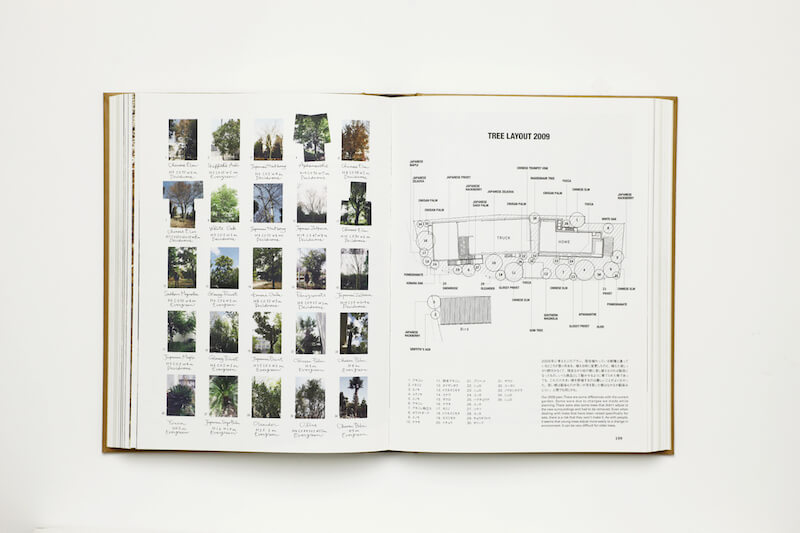

Monocle Magazine
Monocle, the international lifestyle magazine, just looks good. Regardless of its contents, its design draws readers of all backgrounds and interests to buy one and show off.
Interestingly, when I searched for photos to place here, most results turned up photos of not just the publication but of the publication on a desk, or next to a coffee, or sitting "handsome" on a bookshelf. This was true for the magazine as well as its more formal publications, like the Monocle Guide to Better Living.
I don't see why a book about language like JFA couldn't be just as attractive. Namely, I would like a linear grid structure with clean lines, serif font, and muted color scheme with flaired accent colors. I prefer illustrations over photographs, unless photos could be done in the film-like fashion of TRUCK nest (see above).
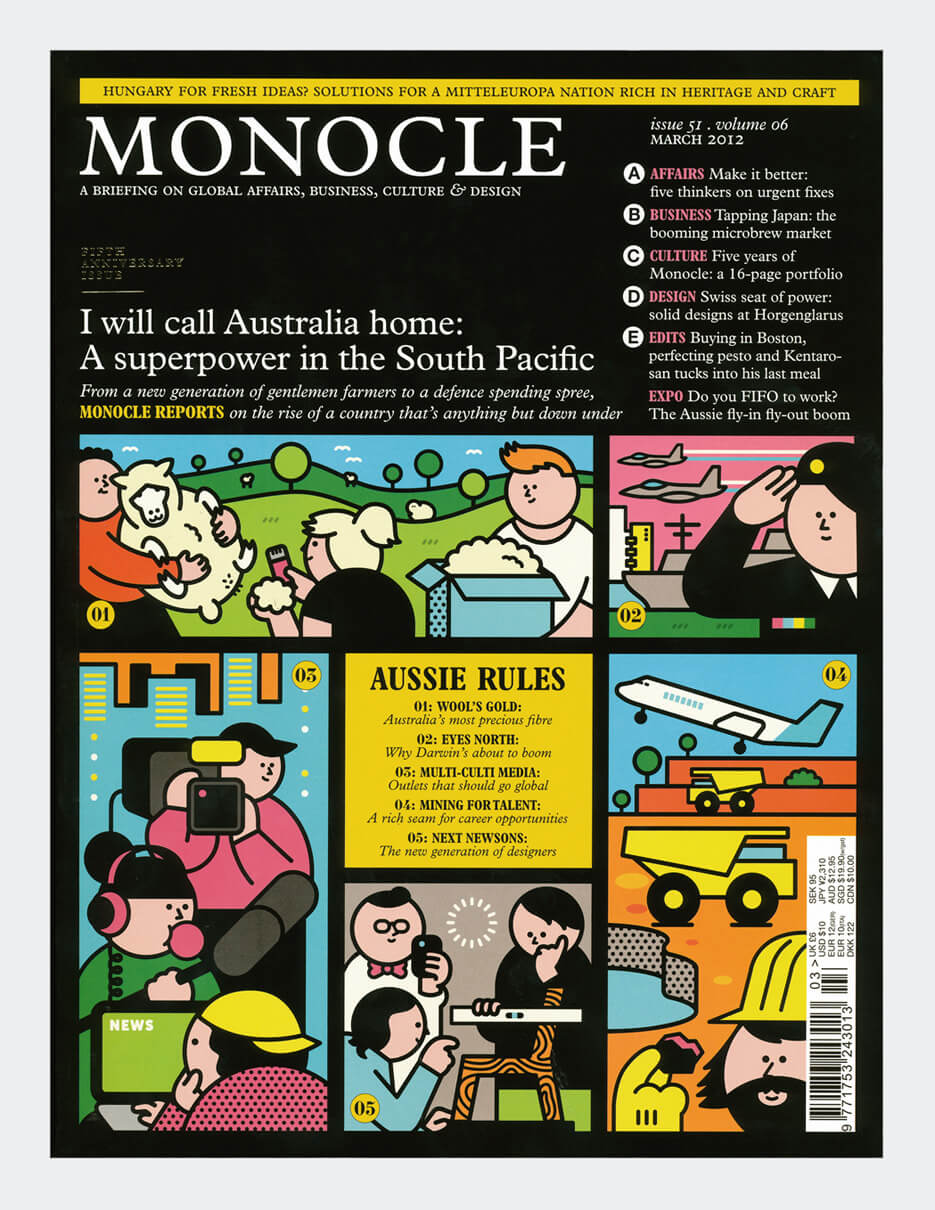

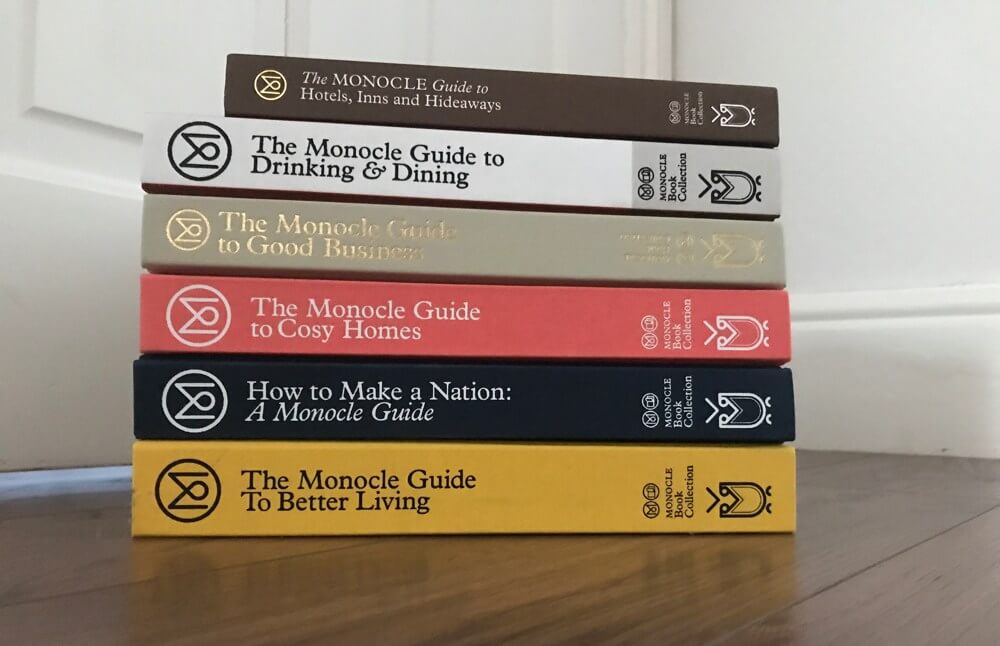

Future Plans
This version of JFA is actually only half of what I had originally written. I intend on releasing that content as a second volume to this book in the future, with the agent and publisher I work with for this one.
The second volume would build on the foundations of the first and allow the user to use like shimasu, make more specific requests (“Is it okay if I…”; “Could you… for me?”), make statements about giving and receiving items, use the conjunction no and other modifiers to describe things, and more.
I can teach the above concepts easily to the reader who has made it through the fundamentals of context and word order I cover, yet I chose to separate them from this first volume because of the inevitable domino effect.
For example, if I introduce the reader the verb shimasu in katakana-compounds such as kyanseru-shimasu (キャンセルする, “to cancel”), I would thus see it natural to teach its -te form shite to use in requests such as, “kyanseru shite ii desu ka?”, since it builds on what the reader already learned in #5 of The First Five. It would also then be prudent to show the more polite “kyanseru shite mo ii desu ka?”, then go into other verb combinations used in requests like “kyanseru shite moratte ii desu ka?”. The reader could make hundreds of new sentences with those four patterns alone.
However, I do not simply show the reader what word comes next in a sequence and leave it at that. I explain it, I give reframes and examples; I relate it to English phenomena; I relate it to previous sentences and grammar points; I explain what contexts to use them in and why they work there. I also make it a point to show many example sentences from various everyday situations where that grammar point might be used. This quickly amounts to many additional pages – but perhaps with the right publisher and formatting, it would be feasible. I am open to discussion about it, or any aspect that would go into the final version.
Who are you?
My name is Deanna, and:
- I'm 29 and from Maryland, USA
- I'm currently in the Master's program for North American Studies: Politics and Sociology at the Freie Universitat Berlin
- I work remotely doing translation and international sales for TRUCK FURNITURE, a furniture company based in Osaka, Japan
- I lived in Osaka, Japan for seven years, obtained JLPT N1 language proficiency, and worked as a teacher, tour guide, translator, and interpreter
- I translate and edit writings and interviews written by my boss, Tokuhiko Kise, some of which were put into print in publications such as Parker Fitgerald's "Overgrowth" and Justin Chung's "Faculty Department Vol. 2"
- I was the English editor and writer of the book jacket for Authentic Wave by Tatsuo Takei
- I make websites, but mostly for my own projects, such as the one you’re visiting now ✨
